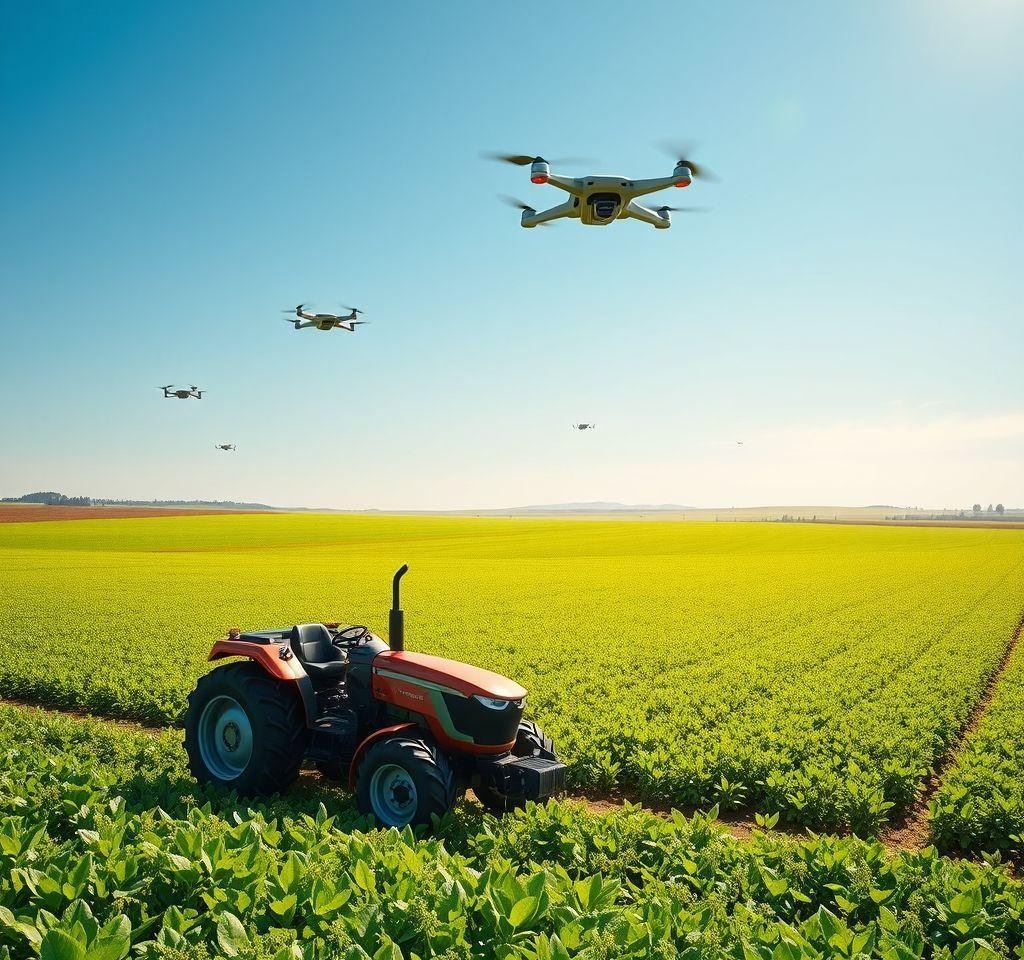AI and the Evolution of Smart Homes: The Future of Intelligent Living
The integration of artificial intelligence into smart homes is revolutionizing domestic life, blending convenience with cutting-edge technology. This article delves into AI’s transformative impact, from foundational principles to ethical challenges and future possibilities.
The Foundations of AI-Driven Smart Homes
The Foundations of AI-Driven Smart Homes
Smart homes have evolved from simple remote control to sophisticated systems. Early automation involved basic tasks. These included lighting and temperature control. The introduction of microcontrollers marked a significant advancement. It enabled more complex and coordinated functions. The late 20th century saw the emergence of home automation systems. These systems used wired networks for communication. X10 was a popular protocol. It allowed devices to communicate over power lines.
The transition to AI integration began with machine learning. Algorithms learned user preferences and patterns. This allowed for personalized automation. Key milestones include voice assistants and smart thermostats. These devices demonstrated the potential of AI. They could adapt to user needs. AI and IoT synergy drives further innovation. Improved sensors and data analytics enhanced AI capabilities. These advancements paved the way for truly intelligent homes.
AI-Powered Voice and Gesture Control
The Foundations of AI-Driven Smart Homes
Smart homes have evolved from simple remote control to sophisticated systems. Early automation involved basic tasks. These included lighting and temperature control. The introduction of microcontrollers marked a significant advancement. It enabled more complex and coordinated functions. The late 20th century saw the emergence of home automation systems. These systems used wired networks for communication. X10 was a popular protocol. It allowed devices to communicate over power lines.
The transition to AI integration began with machine learning. Algorithms learned user preferences and patterns. This allowed for personalized automation. Key milestones include voice assistants and smart thermostats. These devices demonstrated the potential of AI. They could adapt to user needs. AI and IoT synergy drives further innovation. Improved sensors and data analytics enhanced AI capabilities. These advancements paved the way for truly intelligent homes.
Predictive Maintenance and Energy Efficiency
The Foundations of AI-Driven Smart Homes
Smart homes have evolved from simple remote control to sophisticated systems. Early automation involved basic tasks. These included lighting and temperature control. The introduction of microcontrollers marked a significant advancement. It enabled more complex and coordinated functions. The late 20th century saw the emergence of home automation systems. These systems used wired networks for communication. X10 was a popular protocol. It allowed devices to communicate over power lines.
The transition to AI integration began with machine learning. Algorithms learned user preferences and patterns. This allowed for personalized automation. Key milestones include voice assistants and smart thermostats. These devices demonstrated the potential of AI. They could adapt to user needs. AI and IoT synergy drives further innovation. Improved sensors and data analytics enhanced AI capabilities. These advancements paved the way for truly intelligent homes.
Ethical and Privacy Considerations
The Foundations of AI-Driven Smart Homes
Smart homes have evolved from simple remote control to sophisticated systems. Early automation involved basic tasks. These included lighting and temperature control. The introduction of microcontrollers marked a significant advancement. It enabled more complex and coordinated functions. The late 20th century saw the emergence of home automation systems. These systems used wired networks for communication. X10 was a popular protocol. It allowed devices to communicate over power lines.
The transition to AI integration began with machine learning. Algorithms learned user preferences and patterns. This allowed for personalized automation. Key milestones include voice assistants and smart thermostats. These devices demonstrated the potential of AI. They could adapt to user needs. AI and IoT synergy drives further innovation. Improved sensors and data analytics enhanced AI capabilities. These advancements paved the way for truly intelligent homes.
The Roadmap to Fully Autonomous Living
The Foundations of AI-Driven Smart Homes
Smart homes have evolved from simple remote control to sophisticated systems. Early automation involved basic tasks. These included lighting and temperature control. The introduction of microcontrollers marked a significant advancement. It enabled more complex and coordinated functions. The late 20th century saw the emergence of home automation systems. These systems used wired networks for communication. X10 was a popular protocol. It allowed devices to communicate over power lines.
The transition to AI integration began with machine learning. Algorithms learned user preferences and patterns. This allowed for personalized automation. Key milestones include voice assistants and smart thermostats. These devices demonstrated the potential of AI. They could adapt to user needs. AI and IoT synergy drives further innovation. Improved sensors and data analytics enhanced AI capabilities. These advancements paved the way for truly intelligent homes.
The Foundations of AI-Driven Smart Homes
AI-Powered Voice and Gesture Control
Voice assistants have revolutionized smart home interaction. They allow users to control devices hands-free. Natural language processing (NLP) is crucial for understanding voice commands. AI algorithms analyze speech patterns and intent. This enables accurate and responsive control. Gesture recognition offers another intuitive interface. Cameras and sensors interpret hand movements. Users can adjust settings with simple gestures.
Contextual awareness enhances personalization. AI algorithms learn user habits. They adapt to specific situations. For example, the system adjusts lighting based on time of day. It also considers user activity. AI improves accessibility for individuals with disabilities. Voice and gesture control provide alternative input methods. These technologies enhance user experience. They make smart homes more convenient. Conversational AI developments are key to future improvements. Multi-modal AI integration will further refine control.
AI-Powered Voice and Gesture Control
AI-Powered Voice and Gesture Control
Voice assistants have revolutionized smart home interaction. They allow users to control devices hands-free. Natural language processing (NLP) is crucial for understanding voice commands. AI algorithms analyze speech patterns and intent. This enables accurate and responsive control. Gesture recognition offers another intuitive interface. Cameras and sensors interpret hand movements. Users can adjust settings with simple gestures.
Contextual awareness enhances personalization. AI algorithms learn user habits. They adapt to specific situations. For example, the system adjusts lighting based on time of day. It also considers user activity. AI improves accessibility for individuals with disabilities. Voice and gesture control provide alternative input methods. These technologies enhance user experience. They make smart homes more convenient. Conversational AI developments are key to future improvements. Multi-modal AI integration will further refine control.
Predictive Maintenance and Energy Efficiency
AI-Powered Voice and Gesture Control
Voice assistants have revolutionized smart home interaction. They allow users to control devices hands-free. Natural language processing (NLP) is crucial for understanding voice commands. AI algorithms analyze speech patterns and intent. This enables accurate and responsive control. Gesture recognition offers another intuitive interface. Cameras and sensors interpret hand movements. Users can adjust settings with simple gestures.
Contextual awareness enhances personalization. AI algorithms learn user habits. They adapt to specific situations. For example, the system adjusts lighting based on time of day. It also considers user activity. AI improves accessibility for individuals with disabilities. Voice and gesture control provide alternative input methods. These technologies enhance user experience. They make smart homes more convenient. Conversational AI developments are key to future improvements. Multi-modal AI integration will further refine control.
Ethical and Privacy Considerations
AI-Powered Voice and Gesture Control
Voice assistants have revolutionized smart home interaction. They allow users to control devices hands-free. Natural language processing (NLP) is crucial for understanding voice commands. AI algorithms analyze speech patterns and intent. This enables accurate and responsive control. Gesture recognition offers another intuitive interface. Cameras and sensors interpret hand movements. Users can adjust settings with simple gestures.
Contextual awareness enhances personalization. AI algorithms learn user habits. They adapt to specific situations. For example, the system adjusts lighting based on time of day. It also considers user activity. AI improves accessibility for individuals with disabilities. Voice and gesture control provide alternative input methods. These technologies enhance user experience. They make smart homes more convenient. Conversational AI developments are key to future improvements. Multi-modal AI integration will further refine control.
The Roadmap to Fully Autonomous Living
AI-Powered Voice and Gesture Control
Voice assistants have revolutionized smart home interaction. They allow users to control devices hands-free. Natural language processing (NLP) is crucial for understanding voice commands. AI algorithms analyze speech patterns and intent. This enables accurate and responsive control. Gesture recognition offers another intuitive interface. Cameras and sensors interpret hand movements. Users can adjust settings with simple gestures.
Contextual awareness enhances personalization. AI algorithms learn user habits. They adapt to specific situations. For example, the system adjusts lighting based on time of day. It also considers user activity. AI improves accessibility for individuals with disabilities. Voice and gesture control provide alternative input methods. These technologies enhance user experience. They make smart homes more convenient. Conversational AI developments are key to future improvements. Multi-modal AI integration will further refine control.
The Foundations of AI-Driven Smart Homes
Predictive Maintenance and Energy Efficiency
AI plays a crucial role in optimizing energy consumption. It analyzes energy usage patterns. This helps identify areas for improvement. Machine learning algorithms predict equipment failure. This allows for proactive maintenance. It prevents costly repairs and downtime. AI-driven systems can autonomously adjust home settings. This includes lighting, heating, and cooling. These adjustments minimize energy waste.
Predictive maintenance ensures optimal performance. Sensors monitor equipment conditions. AI algorithms detect anomalies. They can predict when maintenance is needed. This approach reduces the risk of unexpected breakdowns. It extends the lifespan of appliances. Autonomous adjustments consider various factors. These include weather conditions and occupancy patterns. AI balances comfort with energy savings. It reduces utility costs. IoT in energy management is essential for data collection. This data drives AI algorithms for better predictions.
AI-Powered Voice and Gesture Control
Predictive Maintenance and Energy Efficiency
AI plays a crucial role in optimizing energy consumption. It analyzes energy usage patterns. This helps identify areas for improvement. Machine learning algorithms predict equipment failure. This allows for proactive maintenance. It prevents costly repairs and downtime. AI-driven systems can autonomously adjust home settings. This includes lighting, heating, and cooling. These adjustments minimize energy waste.
Predictive maintenance ensures optimal performance. Sensors monitor equipment conditions. AI algorithms detect anomalies. They can predict when maintenance is needed. This approach reduces the risk of unexpected breakdowns. It extends the lifespan of appliances. Autonomous adjustments consider various factors. These include weather conditions and occupancy patterns. AI balances comfort with energy savings. It reduces utility costs. IoT in energy management is essential for data collection. This data drives AI algorithms for better predictions.
Predictive Maintenance and Energy Efficiency
Predictive Maintenance and Energy Efficiency
AI plays a crucial role in optimizing energy consumption. It analyzes energy usage patterns. This helps identify areas for improvement. Machine learning algorithms predict equipment failure. This allows for proactive maintenance. It prevents costly repairs and downtime. AI-driven systems can autonomously adjust home settings. This includes lighting, heating, and cooling. These adjustments minimize energy waste.
Predictive maintenance ensures optimal performance. Sensors monitor equipment conditions. AI algorithms detect anomalies. They can predict when maintenance is needed. This approach reduces the risk of unexpected breakdowns. It extends the lifespan of appliances. Autonomous adjustments consider various factors. These include weather conditions and occupancy patterns. AI balances comfort with energy savings. It reduces utility costs. IoT in energy management is essential for data collection. This data drives AI algorithms for better predictions.
Ethical and Privacy Considerations
Predictive Maintenance and Energy Efficiency
AI plays a crucial role in optimizing energy consumption. It analyzes energy usage patterns. This helps identify areas for improvement. Machine learning algorithms predict equipment failure. This allows for proactive maintenance. It prevents costly repairs and downtime. AI-driven systems can autonomously adjust home settings. This includes lighting, heating, and cooling. These adjustments minimize energy waste.
Predictive maintenance ensures optimal performance. Sensors monitor equipment conditions. AI algorithms detect anomalies. They can predict when maintenance is needed. This approach reduces the risk of unexpected breakdowns. It extends the lifespan of appliances. Autonomous adjustments consider various factors. These include weather conditions and occupancy patterns. AI balances comfort with energy savings. It reduces utility costs. IoT in energy management is essential for data collection. This data drives AI algorithms for better predictions.
The Roadmap to Fully Autonomous Living
Predictive Maintenance and Energy Efficiency
AI plays a crucial role in optimizing energy consumption. It analyzes energy usage patterns. This helps identify areas for improvement. Machine learning algorithms predict equipment failure. This allows for proactive maintenance. It prevents costly repairs and downtime. AI-driven systems can autonomously adjust home settings. This includes lighting, heating, and cooling. These adjustments minimize energy waste.
Predictive maintenance ensures optimal performance. Sensors monitor equipment conditions. AI algorithms detect anomalies. They can predict when maintenance is needed. This approach reduces the risk of unexpected breakdowns. It extends the lifespan of appliances. Autonomous adjustments consider various factors. These include weather conditions and occupancy patterns. AI balances comfort with energy savings. It reduces utility costs. IoT in energy management is essential for data collection. This data drives AI algorithms for better predictions.
The Foundations of AI-Driven Smart Homes
Ethical and Privacy Considerations
AI-powered homes raise significant data privacy concerns. Smart devices collect vast amounts of personal information. This includes usage patterns and behavioral data. Security risks are also a major issue. Vulnerabilities in devices can expose homes to cyberattacks. Ethical dilemmas arise from data usage and algorithmic bias. Transparency is crucial for building consumer trust. Users must understand how their data is collected and used.
Emerging regulations aim to protect consumer privacy. These regulations often focus on data minimization. They also emphasize user consent and data security. Strategies for building trust include robust security measures. Data encryption and secure authentication are essential. Privacy-enhancing technologies offer additional protection. These technologies minimize data exposure. IoT security is paramount for protecting smart homes. Addressing these concerns is vital for the sustainable adoption of AI.
AI-Powered Voice and Gesture Control
Ethical and Privacy Considerations
AI-powered homes raise significant data privacy concerns. Smart devices collect vast amounts of personal information. This includes usage patterns and behavioral data. Security risks are also a major issue. Vulnerabilities in devices can expose homes to cyberattacks. Ethical dilemmas arise from data usage and algorithmic bias. Transparency is crucial for building consumer trust. Users must understand how their data is collected and used.
Emerging regulations aim to protect consumer privacy. These regulations often focus on data minimization. They also emphasize user consent and data security. Strategies for building trust include robust security measures. Data encryption and secure authentication are essential. Privacy-enhancing technologies offer additional protection. These technologies minimize data exposure. IoT security is paramount for protecting smart homes. Addressing these concerns is vital for the sustainable adoption of AI.
Predictive Maintenance and Energy Efficiency
Ethical and Privacy Considerations
AI-powered homes raise significant data privacy concerns. Smart devices collect vast amounts of personal information. This includes usage patterns and behavioral data. Security risks are also a major issue. Vulnerabilities in devices can expose homes to cyberattacks. Ethical dilemmas arise from data usage and algorithmic bias. Transparency is crucial for building consumer trust. Users must understand how their data is collected and used.
Emerging regulations aim to protect consumer privacy. These regulations often focus on data minimization. They also emphasize user consent and data security. Strategies for building trust include robust security measures. Data encryption and secure authentication are essential. Privacy-enhancing technologies offer additional protection. These technologies minimize data exposure. IoT security is paramount for protecting smart homes. Addressing these concerns is vital for the sustainable adoption of AI.
Ethical and Privacy Considerations
Ethical and Privacy Considerations
AI-powered homes raise significant data privacy concerns. Smart devices collect vast amounts of personal information. This includes usage patterns and behavioral data. Security risks are also a major issue. Vulnerabilities in devices can expose homes to cyberattacks. Ethical dilemmas arise from data usage and algorithmic bias. Transparency is crucial for building consumer trust. Users must understand how their data is collected and used.
Emerging regulations aim to protect consumer privacy. These regulations often focus on data minimization. They also emphasize user consent and data security. Strategies for building trust include robust security measures. Data encryption and secure authentication are essential. Privacy-enhancing technologies offer additional protection. These technologies minimize data exposure. IoT security is paramount for protecting smart homes. Addressing these concerns is vital for the sustainable adoption of AI.
The Roadmap to Fully Autonomous Living
Ethical and Privacy Considerations
AI-powered homes raise significant data privacy concerns. Smart devices collect vast amounts of personal information. This includes usage patterns and behavioral data. Security risks are also a major issue. Vulnerabilities in devices can expose homes to cyberattacks. Ethical dilemmas arise from data usage and algorithmic bias. Transparency is crucial for building consumer trust. Users must understand how their data is collected and used.
Emerging regulations aim to protect consumer privacy. These regulations often focus on data minimization. They also emphasize user consent and data security. Strategies for building trust include robust security measures. Data encryption and secure authentication are essential. Privacy-enhancing technologies offer additional protection. These technologies minimize data exposure. IoT security is paramount for protecting smart homes. Addressing these concerns is vital for the sustainable adoption of AI.
The Foundations of AI-Driven Smart Homes
The Roadmap to Fully Autonomous Living
Future AI applications promise self-optimizing smart homes. These homes will autonomously manage resources. They will adapt to changing conditions. Emotion-aware AI assistants will provide personalized support. They will respond to user’s emotional states. Seamless IoT integration will connect all devices. This will create a unified and intelligent environment.
Self-optimizing ecosystems will learn from data. They will continuously improve efficiency. AI will adjust lighting, temperature, and energy usage. It will anticipate user needs. Emotion-aware assistants will use sensors. They will interpret facial expressions and voice tones. This will allow for empathetic and proactive assistance. Seamless IoT integration requires standardized protocols. It also needs robust security measures. IoT in smart cities showcases potential integrations. This will enable truly autonomous and responsive living spaces.
AI-Powered Voice and Gesture Control
The Roadmap to Fully Autonomous Living
Future AI applications promise self-optimizing smart homes. These homes will autonomously manage resources. They will adapt to changing conditions. Emotion-aware AI assistants will provide personalized support. They will respond to user’s emotional states. Seamless IoT integration will connect all devices. This will create a unified and intelligent environment.
Self-optimizing ecosystems will learn from data. They will continuously improve efficiency. AI will adjust lighting, temperature, and energy usage. It will anticipate user needs. Emotion-aware assistants will use sensors. They will interpret facial expressions and voice tones. This will allow for empathetic and proactive assistance. Seamless IoT integration requires standardized protocols. It also needs robust security measures. IoT in smart cities showcases potential integrations. This will enable truly autonomous and responsive living spaces.
Predictive Maintenance and Energy Efficiency
The Roadmap to Fully Autonomous Living
Future AI applications promise self-optimizing smart homes. These homes will autonomously manage resources. They will adapt to changing conditions. Emotion-aware AI assistants will provide personalized support. They will respond to user’s emotional states. Seamless IoT integration will connect all devices. This will create a unified and intelligent environment.
Self-optimizing ecosystems will learn from data. They will continuously improve efficiency. AI will adjust lighting, temperature, and energy usage. It will anticipate user needs. Emotion-aware assistants will use sensors. They will interpret facial expressions and voice tones. This will allow for empathetic and proactive assistance. Seamless IoT integration requires standardized protocols. It also needs robust security measures. IoT in smart cities showcases potential integrations. This will enable truly autonomous and responsive living spaces.
Ethical and Privacy Considerations
The Roadmap to Fully Autonomous Living
Future AI applications promise self-optimizing smart homes. These homes will autonomously manage resources. They will adapt to changing conditions. Emotion-aware AI assistants will provide personalized support. They will respond to user’s emotional states. Seamless IoT integration will connect all devices. This will create a unified and intelligent environment.
Self-optimizing ecosystems will learn from data. They will continuously improve efficiency. AI will adjust lighting, temperature, and energy usage. It will anticipate user needs. Emotion-aware assistants will use sensors. They will interpret facial expressions and voice tones. This will allow for empathetic and proactive assistance. Seamless IoT integration requires standardized protocols. It also needs robust security measures. IoT in smart cities showcases potential integrations. This will enable truly autonomous and responsive living spaces.
The Roadmap to Fully Autonomous Living
The Roadmap to Fully Autonomous Living
Future AI applications promise self-optimizing smart homes. These homes will autonomously manage resources. They will adapt to changing conditions. Emotion-aware AI assistants will provide personalized support. They will respond to user’s emotional states. Seamless IoT integration will connect all devices. This will create a unified and intelligent environment.
Self-optimizing ecosystems will learn from data. They will continuously improve efficiency. AI will adjust lighting, temperature, and energy usage. It will anticipate user needs. Emotion-aware assistants will use sensors. They will interpret facial expressions and voice tones. This will allow for empathetic and proactive assistance. Seamless IoT integration requires standardized protocols. It also needs robust security measures. IoT in smart cities showcases potential integrations. This will enable truly autonomous and responsive living spaces.
Final Words
AI-driven smart homes now shape daily living through adaptive systems and predictive analytics. As technology evolves, balancing innovation with privacy will be critical. Homeowners must adopt these advancements thoughtfully, prioritizing security and ethical practices to harness AI’s full potential.




